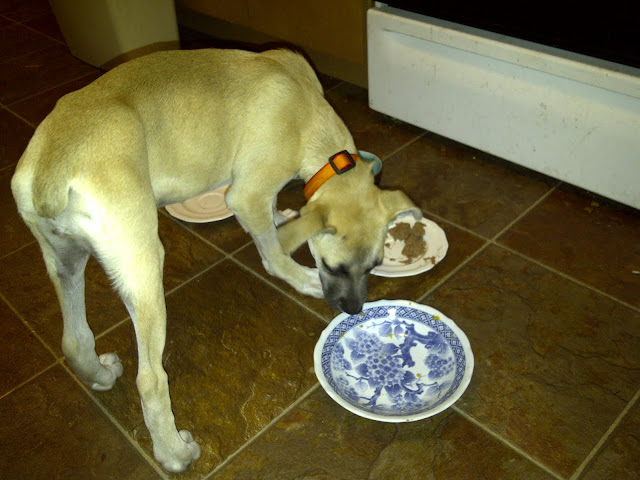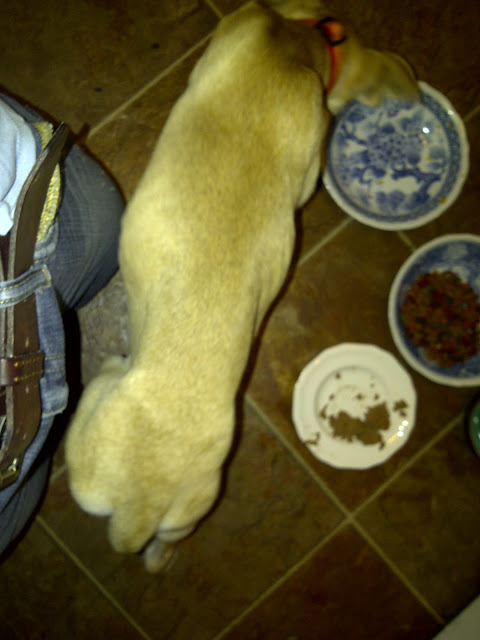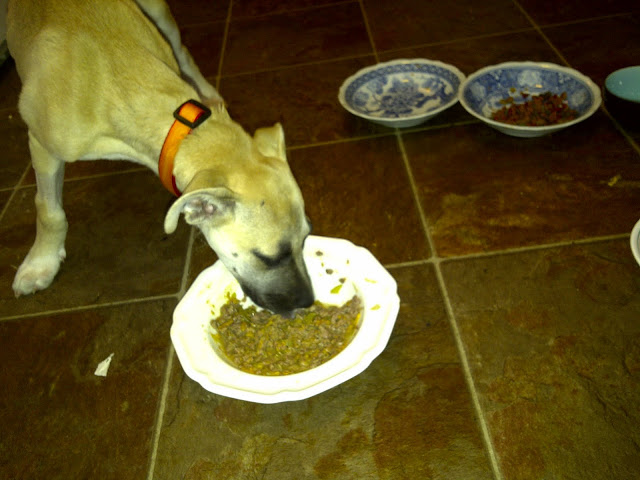I found a very informative website today – chemistry information for the discerning customer. I discerned that this calcium channel blocker would be a good one to avoid. It contains bromide and kills mice at minor doses. Pain killing through promotion of numbness seems like a losing notion.
 |
| QX314 (bromide) derived from lidocaine |
This calcium channel blocker is used as a local anesthetic like lidocaine, from which it is made. It has had a bromide added. The molecule won’t kill pain unless it makes it into the inside of the cell. The calcium channels are opened by irritating the surface of the skin with capsaicin, better known as hot pepper. The brominated lidocaine derivitive can then get into the cell where its pain killing properties aren’t associated with as much numbness as lidocaine itself – a “benefit”. However the bromide trapped inside of the cell is not really a benefit over the course of time. It is a drying agent in the outside world and is associated with ill health.
For comparison – a molecule of lidocaine – no bromide:
 |
| Lidocaine |
Endogenous cannabinoids are messengers in themselves as well as being precursors to eicosanoids. Chemical companies are currently selling us eicosanoids at a hefty price. We could build them ourselves internally from normal food building blocks like egg yolk, chicken thigh/drumstick, spinach, soy bean sprouts, and of course my favorites the nuts, beans , seeds – you name it – I’ll look it up haven’t found one yet with no beneficial ingredients. There may be a few to avoid because of negatives – I believe something in apple seeds are not good for us.
Eicosanoids include the leukotrienes:
- http://www.scbt.com/datasheet-201046-ltc4-leukotriene-c4-.html Santa Cruz Biotechnology, Inc.
 |
| LTC4 (Leukotriene C4) |
“LTC4 (Leukotriene C4), and other leukotrienes, are potent eicosanoid lipid mediators that play numerous roles in inflammation, immunological functions and maintaining biological homeostasis; primarily acting through specific G protein-coupled receptors. This product is a potent arachidonic acid (sc-200770)-derived agonist for contraction of smooth muscle and has been shown to induce microvascular permeability and mucus secretion in airways. Furthermore, this product has been shown to enhance growth of human airway epithelial cells, reduce myocardial contractility and coronary blood flow, induce long lasting hypotension, and stimulate angiogenesis.”
*** This one is a product for sale that is found in nature, unlike the Tumor Necrosis Factor Inhibitors, which were inventions of genetic manipulation within live cell “factories”.
See my TNF inhibitor blog for more on methotrexate and rheumatoid arthritis also. Leukotrienes are very natural – so natural that if we ate better we would make them ourselves from its precursor arachidonic acid and phosphtidylethanolamine and we wouldn’t need to buy it from a pharmaceutical company. A bargain at $230 for 50 micrograms or $2,945 for 1 mg (1 mg is about 1/5th of a teaspoon – picture a rain drop sellling for $2,945.)
Unfortunately for our membrane’s strength and ability to produce leukotrienes outside of the laboratory and inside of our cells we would need more arachidonic acid, a poly-unsaturated omega 6 fatty acid that has gotten a bad health reputation and we are being advised to avoid it on health websites. [1,2] That website isn’t alone in the notion that arachidonic acid is a bad guy. It seems to be the accepted view based on the lab test values associated with inflammation. During inflammation blood levels of arachidonic acid are raised.
So I say , so . . . yeah an observation, an association, a correlation but that does not make it causative. Elevated levels of arachidonic acid do not mean automatically that arachidonic acid causes inflammation. If I open my car door into my face and move my nose slightly more to one side does that automatically mean that I am a clutz 100% of the time and that opening car doors cause nose dislocation on a daily basis across the nation?
I don’t think so – I think it is a sign that when I am stressed and in a hurry my poor brain energy flow shuts down even more than usual and my movements get bigger and sloppier. I regularly slightly bump my shoulders on the edge of doorways in my hurry through life, but I can also roll gracefully out of a fall making it almost look like I did it on purpose – go figure.
I took ballet during middle school to help mitigate my clutziness – it helped some and I learned how to spin without getting dizzy.
The chemical list at Cayman Chemical made me a little dizzy when I saw the trifluoro-leukotriene, no longer a natural molecule and no longer good for you – in the long run at least. I’m not going to claim any knowledge of its proven efficacy as a modified leukotriene but we have amassed an enormous body of research about the toxic effects of fluoride on ourselves and on other lifeforms. The fluoride makes the new molecule more effective at binding, it gives it more “efficiency”. A designer molecule that does what it is supposed to and doesn’t quit – excellent. Until it starts piling up and becoming a nuisance or worse a messenger out of control, sending continual signals. Another name for that was Chinese Water Torture – the dripping water drop by drop on your sister’s forehead until she can’t stand it anymore game.
Society is much too polite now we wouldn’t use such a derogatory label anymore. We only sell nice drugs at fair and balanced prices. Or are we being sold body parts at a huge markup – marked far above the vegetables and oils that we need to make the “drugs”. Leukotrienes can be built within each and everyone of us and in sea squirts with stuff like sunflower seeds and pomegranate -seeds – eat the whole fruit not just the juice. Carrots, apples, shitake mushrooms, and oat bran are all very good for us. A tiny bit of a whole food added to a processed one for marketing purposes is less likely to be as healing then a full serving would deliver..
The FDA is taking comments about regulating vitamins and supplements until December 2, 2011. I don’t know all the details yet – I have been reading a few other things lately, so do please look into it at Life Extension or Natural News
http://www.naturalnews.com/033711_FDA_dietary_supplements.html
 |
| 20-Trifluoro Leukotriene B4, Cayman Chemical # 20195, $ 2,144 per 500 micrograms |
_____________________________________________________________________________
1. http://www.livestrong.com/article/496582-vegetables-that-contain-arachidonic-acid/?utm_source=popslideshow&utm_medium=a1
by Timothy Blalock (7-20-2011) ***Sesame seeds were a staple for me in the form of tahini.
2. http://www.livestrong.com/article/38903-foods-high-arachidonic-acid/ by Dana George (3-28-2011)
3. http://lib.bioinfo.pl/meid:47278
The vitamin D-activating enzyme 1α-hydroxylase (CYP27B1) and vitamin D receptor (VDR) support anti-inflammatory responses to vitamin D in many tissues. Given the high basal expression of CYP27B1 and VDR in trophoblastic cells from the placenta, we hypothesized that anti-inflammatory effects of vitamin D may be particularly important in this organ. Pregnant wild type (WT) mice i.p. injected with LPS showed elevated expression of mouse Cyp27b1 (4-fold) and VDR (6-fold). Similar results were also obtained after ex vivo treatment of WT placentas with LPS. To assess the functional impact of this, we carried out ex vivo studies using placentas -/- for fetal (trophoblastic) Cyp27b1 or VDR. Vehicle-treated -/- placentas showed increased expression of IFN-γ and decreased expression of IL-10 relative to +/+ placentas. LPS-treated -/- placentas showed increased expression of TLR2, IFN-γ, and IL-6. Array analyses identified other inflammatory factors that are dysregulated in Cyp27b1(-/-) versus Cyp27b1(+/+) placentas after LPS challenge. Data highlighted enhanced expression of IL-4, IL-15, and IL-18, as well as several chemokines and their receptors, in Cyp27b1(-/-) placentas. Similar results for IL-6 expression were observed with placentas -/- for trophoblastic VDR. Finally, ex vivo treatment of WT placentas with the substrate for Cyp27b1, 25-hydroxyvitamin D(3), suppressed LPS-induced expression of IL-6 and the chemokine Ccl11. These data indicate that fetal (trophoblastic) vitamin D plays a pivotal role in controlling placental inflammation. In humans, this may be a key factor in placental responses to infection and associated adverse outcomes of pregnancy.
4. http://www.livestrong.com/article/536948-nutritional-sources-of-arachidonic-acid/
5. http://www.mdnews.com/news/hd/2011_42/hd_657614
Colon Inflammation Markers Lower With Ginger Extract
*** Two grams of ginger was given daily for 30 days and intestinal lining inflammation seemed improved based on reduced free arachidonic acid (which is released from breakdown of the endogenous cannabinoids after they are released from their membrane storage in response to elevated intracellular calcium or glutamate levels – just to review from a few blogs ago).
6. http://www.ncbi.nlm.nih.gov/pubmed/21990307
Zick SM, Turgeon DK, Vareed SK, Ruffin MT, Litzinger AJ, Wright BD, Alrawi S, Normolle DP, Djuric Z, Brenner DE. Phase II Study of the Effects of Ginger Root Extract on Eicosanoids in Colon Mucosa in People at Normal Risk for Colorectal Cancer.Cancer Prev Res (Phila). 2011 Oct 11.
“On the basis of these results, it seems that ginger has the potential to decrease eicosanoid levels, perhaps by inhibiting their synthesis from arachidonic acid. Ginger also seemed to be tolerable and safe. Further investigation in people at high risk for CRC seems warranted.”
7. http://www.ncbi.nlm.nih.gov/pubmed/3103137
“Interestingly the incorporation of AA into platelet phospholipids increased in platelets treated with aqueous ginger extract.”
***** Swish and score – ginger helped the body to rebuild endogenous cannabinoids – AA plus phospholipid = healthy rebuilt membranes and endogenous cannabinoids reloaded ready for the next stress signal to fire them off where they can be messengers or be transformed into eicosanoids or other metabolites.
8. http://i4cmwo.com.au/ginger.html
“The University of Virginia research determined that the prostate cancer cells will only eat a chemical called 5-HETE. The cancer center determined that 5-HETE was created from the body’s “combustion” of an Omega-6 fatty acid called arachidonic acid. There is an enzyme called 5-lipoxygenase (or 5-LO for short), and when 5-LO burns or oxidizes the fatty acid, out plops 5-HETE.The researchers concluded that prostate cancer cells eat only this food, and that if the 5-LO enzyme is inhibited, and the food is not around, then the prostate cancer cells experience massive and rapid “apoptosis”, or cellular suicide, within 1 to 2 hours.
Ginger Stem (or root?)is the world’s most comprehensive herbal inhibitor of 5-LO, with at least 22 proven phytonutrient inhibitors of that enzyme. What is more, Oriental Cultures that regularly consume ginger as a spice, or which take it therapeutically, experience a fraction of the cancer mortalities compared to the United States. In other words, men don’t die from prostate cancer cells, we die from the growth and proliferation of the cancer. Once we know that ginger inhibits the process that leads to the creation of the only food the cancer cells will eat, it gives us confidence that an herbal approach to 5-LO inhibition is an indispensable part of prostate health.” (*I retyped this the website article seems to be a review of research and was a bit of a mess.)
** I should have just read this one first. Prostate cancer eats only a metabolite of arachidonic acid – which is a building block of endogenous cannabinoids and strong membranes. It would be to the cancer cell’s advantage to have learned how to use the body’s own system to mobilize resources as a way to get nutrients for themselves. The cancer cell can make the enzyme that activates vitamin 25-D to hormone 1,25-D; hormone 1,25-D signals the bones to release calcium; increased intracellular levels of calcium signal the release of endogenous cannabinoids from membrane storage – arachidonic acid and free phospholipids – cancer food. In the placenta they would have become nutrients for the fetus.
9. http://www.ncbi.nlm.nih.gov/pmc/articles/PMC23752/?tool=pubmed
Jagadananda Ghosh and Charles E. Myers, Inhibition of arachidonate 5-lipoxygenase triggers massive apoptosis in human prostate cancer cells Proc Natl Acad Sci U S A. 1998 October 27; 95(22): 13182–13187. ***I think this might be the research mentioned in the previous link.
“These findings represent an insight into events regulating apoptosis in human prostate cancer cells. Although various eicosanoids have been implicated in the regulation of cell proliferation and cell death in other cell types, this report substantiates that eicosanoids of the 5-HETE series act as critical survival factors for human prostate cancer cells. This antiapoptotic action is quite dramatic in that once the synthesis of this eicosanoid is blocked, onset of massive apoptosis is apparent within 30–60 min.”
10. http://www.ncbi.nlm.nih.gov/pubmed/11241241
Cancer. 2001 Feb 15;91(4):737-43. Lipoxygenase-5 is overexpressed in prostate adenocarcinoma. Gupta S, Srivastava M, Ahmad N, Sakamoto K, Bostwick DG, Mukhtar H.
***Aha, the problem – the prostate cancer cells have learned how to signal the body to make the 5-Lipoxygenase so more ginger for men as a preventative and if prostate cancer is already present then excess intake of arachidonic acid foods may not be good.
11. http://www.ncbi.nlm.nih.gov/pubmed/10325495
12. http://www.ncbi.nlm.nih.gov/pubmed/21393477 Carcinogenesis. 2011 Jun;32(6):822-8. Epub 2011 Mar 10. Enhanced formation of 5-oxo-6,8,11,14-eicosatetraenoic acid by cancer cells in response to oxidative stress, docosahexaenoic acid and neutrophil-derived 5-hydroxy-6,8,11,14-eicosatetraenoic acid. Grant GE, Rubino S, Gravel S, Wang X, Patel P, Rokach J, Powell WS.
“Stimulation of neutrophils with arachidonic acid and calcium ionophore in the presence of PC3 cells led to a large and selective increase in 5-oxo-ETE synthesis compared with controls in which PC3 cell 5-oxo-ETE synthesis was selectively blocked by pretreatment with NEM. The ability of prostate tumor cells to synthesize 5-oxo-ETE may contribute to tumor cell proliferation as well as the influx of inflammatory cells, which may further induce cell proliferation through the release of cytokines. 5-Oxo-ETE may be an attractive target in cancer therapy.”
***Did anyone besides me notice that they stimulated those cancer cells with calcium? Mighten not stimulating cancer with excess calcium be an attractive target for cancer therapy? and cheap?
13. http://www.ncbi.nlm.nih.gov/pubmed/16185917 Biochim Biophys Acta. 2005 Oct 1;1736(3):244-50. Attenuation of breast tumor cell growth by conjugated linoleic acid via inhibition of 5-lipoxygenase activating protein. Kim JH, Hubbard NE, Ziboh V, Erickson KL.
“Ginger has shown downregulation of COX in vitro and decreased incidence/multiplicity of adenomas in rats. This study was conducted to determine if 2.0 g/d of ginger could decrease the levels of PGE(2), 13-hydroxy-octadecadienoic acids, and 5-, 12-, and 15-hydroxyeicosatetraenoic acid (5-, 12-, and 15-HETE), in the colon mucosa of healthy volunteers. To investigate this aim, we randomized 30 subjects to 2.0 g/d ginger or placebo for 28 days”
“Interestingly, t10, c12-CLA reduced the expression of five-lipoxygenase activating protein (FLAP) but not the 5-lipoxygenase enzyme. Over-expression of FLAP abrogated t10, c12-CLA-reduced viability of MDA-MB-231 cells. These data suggest that the reduction of 5-HETE by t10, c12-CLA was due to competition with AA and the reduction of FLAP expression.” ***Take home point – if you already have breast cancer (and probably similar for prostate cancer) then more CLA good fats may help reduce the overfeeding on arachidonic acid.








